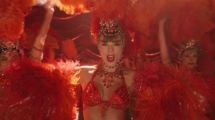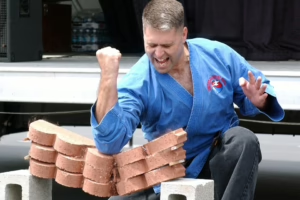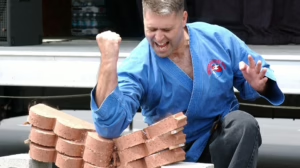Beyond Borders: Global Influences in Acrobatic Arts
Introduction
Acrobatic arts have a rich history that transcends cultural, geographical, and temporal boundaries. From the thrilling spectacles of ancient circuses to contemporary circus performances and acrobatic arts, these disciplines draw upon a myriad of influences from around the world. Acrobatics, at its essence, embodies a fusion of body mastery, creativity, and artistic expression, making it a testament to human ingenuity. This article explores the global influences that shape acrobatic arts, highlighting key traditions from various cultures and their contributions to contemporary practices.
The Historical Context of Acrobatics
To understand modern acrobatic arts, one must first appreciate the historical context that has shaped its development over the centuries. Acrobatics can trace its roots back to ancient civilizations, where it was often intertwined with religious ceremonies, storytelling, and entertainment.
Ancient Civilizations
-
Egyptian Acrobatics: Evidence from ancient Egypt reveals that acrobatic performances were common in religious and entertainment contexts. Hieroglyphics depict performers executing tumbles and human pyramids—activities that would eventually evolve into more formalized circus acts.
-
Greek and Roman Influence: The Greeks greatly valued physical prowess, and their acrobatic traditions were formalized within the context of gymnasiums and theatrical performances. Roman gladiatorial games also included acrobatic performances, showcasing athleticism and daring feats.
- Chinese Acrobatics: One of the oldest forms of acrobatics can be found in China, where it has been practiced for over 2,000 years. Chinese acrobatics showcase unique techniques such as ‘pole climbing,’ ‘plate spinning,’ and incredible feats of balance. These acts are steeped in Chinese culture and philosophy, emphasizing the harmony between mind and body.
The Rise of European Circus
The modern circus as we know it began to take shape in the 18th century in Europe. Influenced by the performances of traveling acrobats and tightrope walkers, Philip Astley established the first circus in London in 1768. His innovative use of the circular ring brought a new dimension to acrobatic performances, combining equestrian acts with human feats of strength, flexibility, and balance.
Global Styles of Acrobatics
Acrobatic arts vary significantly across cultures, each with its unique style and techniques.
1. Chinese Acrobatics
Chinese acrobatics is renowned for its rigorous training and intricate performances that emphasize agility, strength, and harmony. The training typically starts at a young age, emphasizing the development of flexibility, strength, and artistic expression. Performers often incorporate elements of traditional Chinese culture, such as music and costumes, into their acts.
Influence on Contemporary Acrobatics: Many contemporary circus troupes, such as Cirque du Soleil, draw from Chinese acrobatic traditions, incorporating their techniques into modern performances. This blending of styles has contributed to a more diverse acrobatic landscape globally.
2. African Traditions
African acrobatic arts encompass a variety of forms and styles, often reflecting the cultural practices of specific regions. For instance, the ‘Bamileke’ people from Cameroon use acrobatics in their traditional ceremonies, combining dance, storytelling, and acrobatics. Jugging and balancing acts are frequently used to symbolize strength and community unity.
Rhythmic Influence: The music accompanying these performances is often vibrant and percussive, creating a rhythmic backdrop that enhances the physicality of the acrobats. Such influences have found their way into modern acrobatic performances, enriching them with a deep sense of cultural significance.
3. European Traditions
In Europe, clowning and jesting were integrated into acrobatic acts as early as the 14th century. The Commedia dell’arte, an improvisational theatre form, often included acrobatic feats, emphasizing both humor and physicality. The later development of vaudeville further propelled acrobatic acts into the spotlight, showcasing variety and skill.
Innovative Techniques: European traditions introduced unique techniques such as the ‘human pyramid’ and acrobatic dance, which have become staples in modern performances.
4. Brazilian Capoeira
Capoeira is a Brazilian martial art that combines elements of dance, acrobatics, and music. With its African roots, it emphasizes fluid movement, rhythm, and the interplay between two dancers (or capoeiristas). Acrobatics in capoeira consists of flips, kicks, and intricate movements that often seem to defy gravity.
Cultural Exchange: The global popularity of capoeira has led to a fusion of acrobatic techniques and styles, inspiring contemporary practitioners around the world.
Modern Influences and Cross-Pollination
In today’s globalized world, acrobatic arts have evolved dramatically, influenced by a plethora of styles and cultural practices. This cross-pollination has resulted in innovative performances that draw upon diverse traditions.
The Role of Technology
The advancement of technology has markedly transformed acrobatic arts. Innovation in stage design, lighting, and sound has allowed acrobatic performances to reach new heights.
-
Visual Effects: The integration of digital media into performances enhances visual storytelling, offering a multi-dimensional experience. This is particularly evident in large-scale productions like Cirque du Soleil, which seamlessly fuse acrobatics with multimedia artistry.
- Training and Techniques: The use of video analysis and biomechanics has revolutionized training methods. Athletes and performers now use technology to refine their techniques, improve performances, and reduce injuries.
Community and Collaboration
The acrobatic arts community is increasingly collaborative, with performers from different backgrounds coming together to create unique ensemble pieces. This not only enriches performances but also fosters cultural exchange among practitioners.
-
Festivals and Gatherings: Events such as the ‘World Acrobatics Festival’ and various international circus festivals provide platforms for acrobats from different cultures to showcase their work. These gatherings facilitate knowledge sharing and cross-cultural collaborations.
- Social Circus: Social circus initiatives, which aim to empower marginalized communities through acrobatic arts, have gained popularity worldwide. These programs often incorporate local cultural elements, fostering a sense of community and belonging.
The Future of Acrobatic Arts
As the world continues to evolve, the acrobatic arts will undoubtedly reflect these changes. The future may include:
-
Inclusivity: As society becomes more conscious of diversity and inclusivity, we can expect to see more diverse representations within acrobatic performances. This shift will lead to a broader array of narratives and artistic expressions.
-
Expanding Boundaries: The blending of different styles and techniques will continue to push the boundaries of what is possible in acrobatic arts. As performers draw from an increasingly global pool of influences, the resulting performances may lead to completely new genres of acrobatic arts.
- Environmental Consciousness: With increasing awareness of environmental issues, there may be a shift towards sustainable practices within the acrobatic arts. From eco-friendly stage designs to using sustainable materials in costumes, acrobatic communities will likely strive to reduce their environmental impact.
Conclusion
The acrobatic arts illustrate the beautiful tapestry of human creativity, adaptability, and cultural exchange. As we have explored, the influences of diverse cultures have shaped acrobatics into a multifaceted art form. The interplay between tradition and modernity will continue to drive the evolution of acrobatic arts, ensuring that they remain relevant and dynamic.
By embracing this global perspective, acrobatic arts will not only celebrate their rich heritage but also pave the way for future generations of artists to explore, innovate, and transcend boundaries.
Footnotes
- [Source: "A Brief History of Circus: From Antiquity to the Present" – Online Journal of Cultural Studies]
- [Source: "The Cultural Significance of Chinese Acrobatics" – Asian Performance Studies Journal]
- [Source: "Capoeira: The Brazilian Dance that Fuses Music and Martial Arts" – Journal of Cultural Anthropology]
- [Source: "The Influence of Technology on Contemporary Circus" – International Journal of Performance Arts]
- [Source: "Community Collaboration in Acrobatics: Social Circus Initiatives Around the World" – Journal of Community Arts Practice]
This cover provides a foundation for the comprehensive exploration of global influences in acrobatic arts. Each section can be expanded upon further to meet specific requirements or delve deeper into individual themes.


























Add Comment